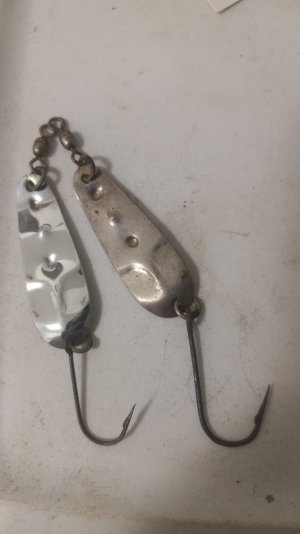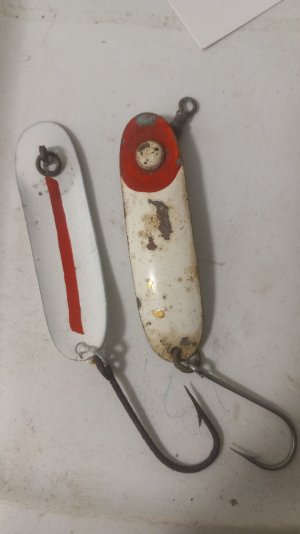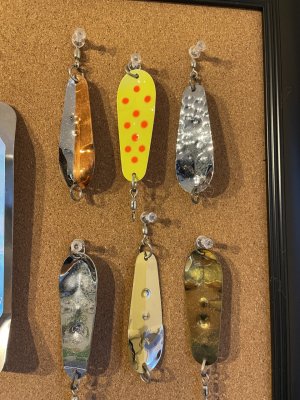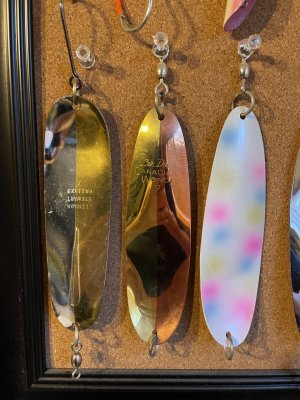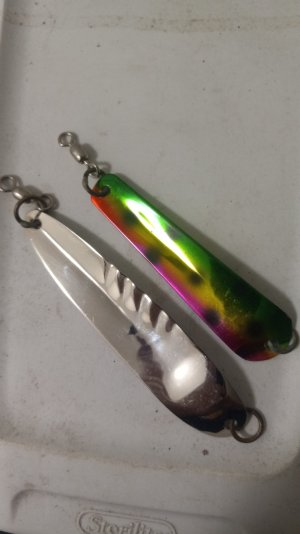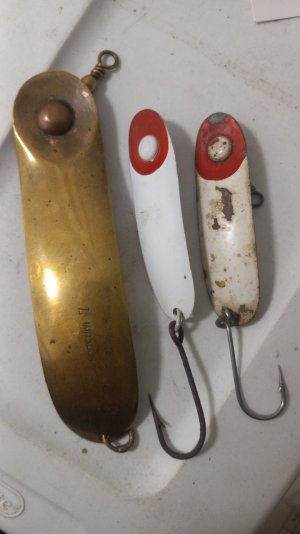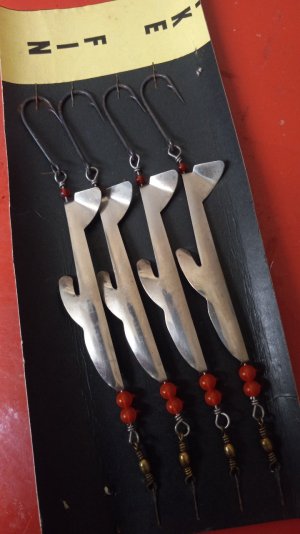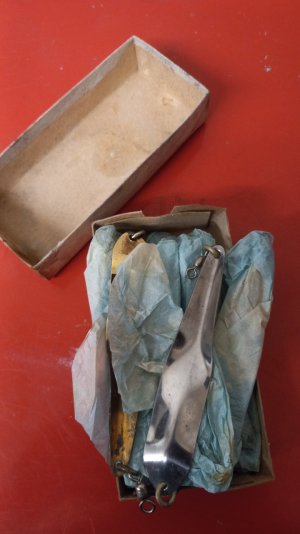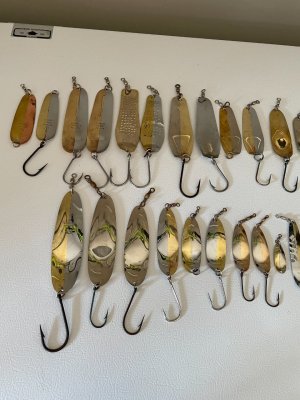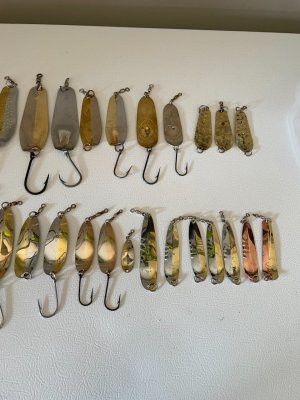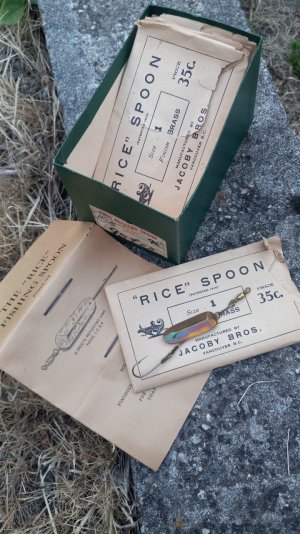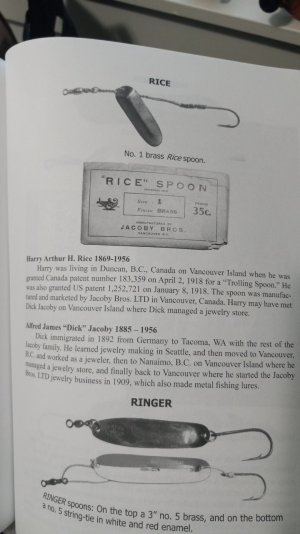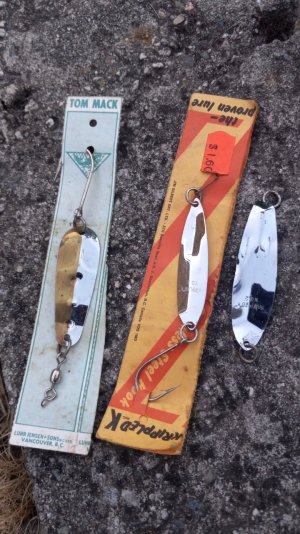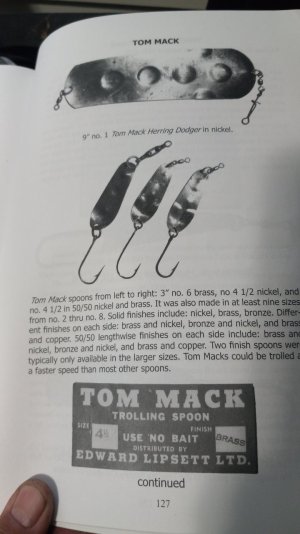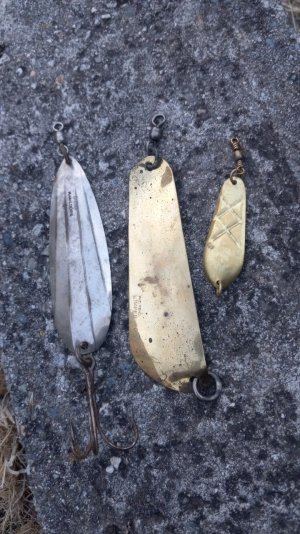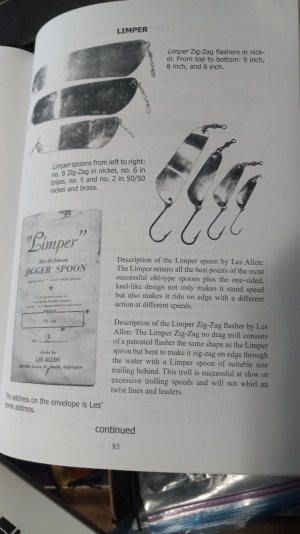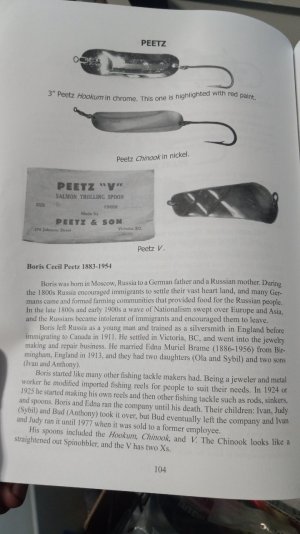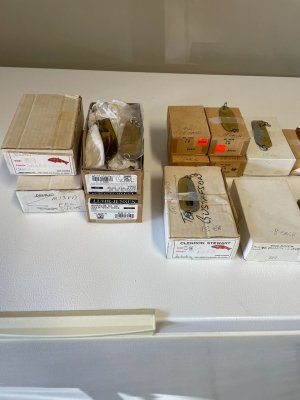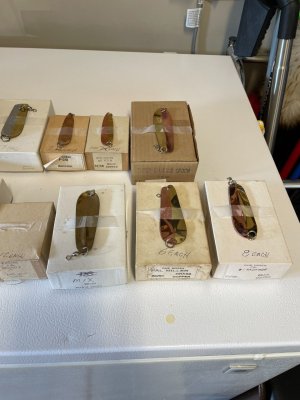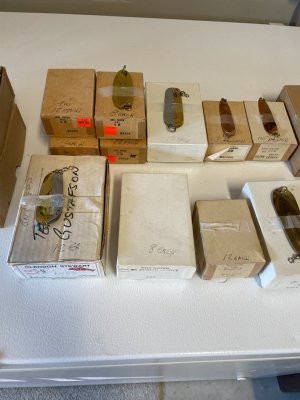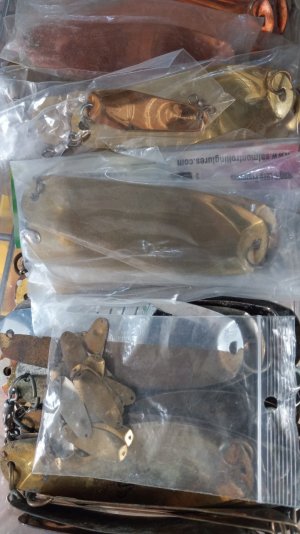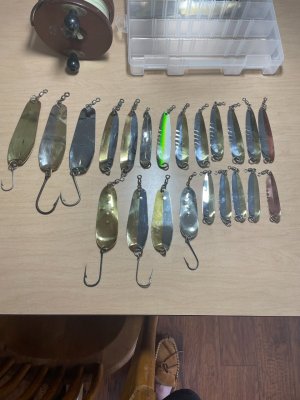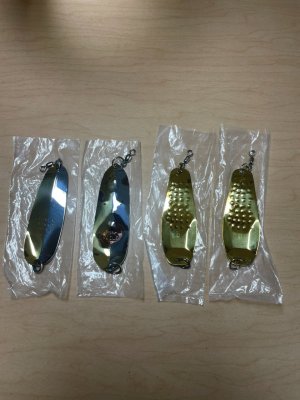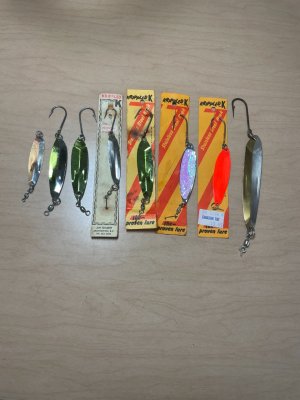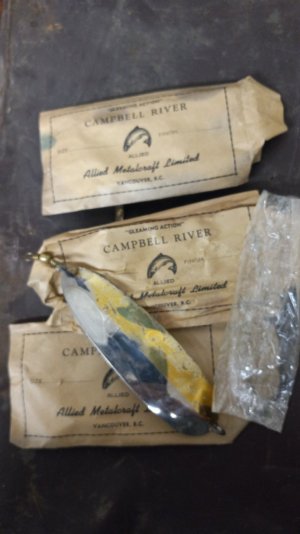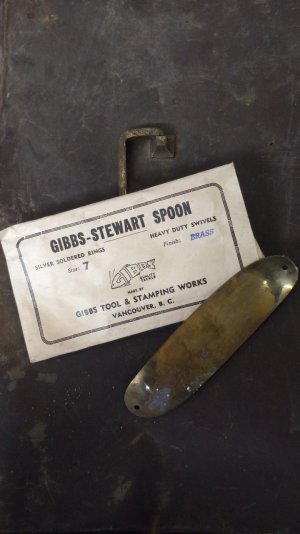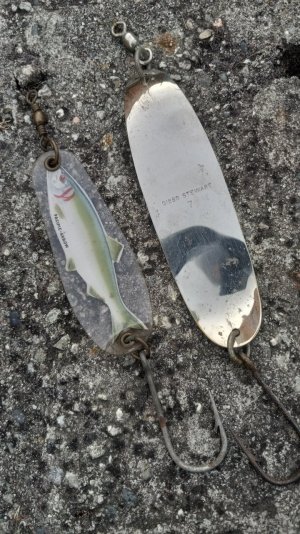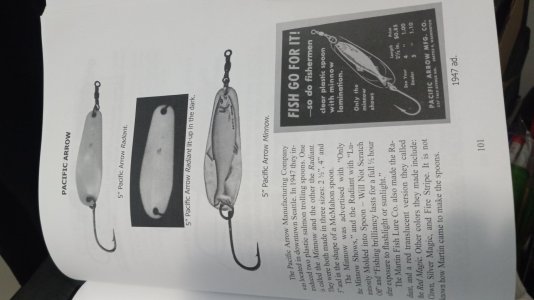It's never exactly the same from one season to the next, but we've had some great days offshore of WH using big, old spoons in 50/50 copper/brass, when the fish are eating big herring. I'm not sure the particular spoon pattern is as important as how it swims with the weight of the hook chosen. For example, I get amazing results out of the #7 size of a particular spoon pattern with a particular mustad heavy siwash hook, but haven't yet found "the hook" to use with the #8 size. And I have WAY more of the 8s than 7s... Have noticed also that modern renditions of classic spoons (wonder, superior, etc.) are stamped from thinner materials. I've not tried the newer ones. The older ones are heavy and very sturdy as mentioned above.
The spoon corrosion can be a PITA. Here's how I've dealt with it as a sporty. Presuming you're dealing with a spoon that's not pitted beyond hope, I use Red Bear powder polish in the first step to work on the heavy corrosion, and either Mrs. Douglas or Flitz polish as the final. Soft cotton rag to apply, and wipe off completely with a soft cotton towel. You can take a pretty sorry looking spoon and get it to shine. Once it's shiny, I equip it with a carbon steel siwash hook (the mustad 9510xx series, I have some bare steel older ones and some blued new ones), wrap in a paper towel with one or two others and put in a ziploc, with the ziploc labeled. They'll show fingerprints and other corrosion patterns if you look at them incorrectly...
The carbon steel hook is the anode for a spoon. I've tried big mustad SS hooks and end up with a haze on the spoons while they troll. I think commies used to use a twist of haywire or a "jump ring" made of iron or aluminum on one of the brazed spoon rings back in the old days...a few of my spoons had a rusty ring on the tail end. I mash the barb flat, file it off if it breaks and leaves a nub, sharpen the tip, and I use the plier to tweak the hook tip back toward the hook eye a small amount. Sometimes I also bend an offset in the hook, so that the tip isn't quite inplane with the shank. They hold fish pretty well.
These only get used over the course of a single 1-week trip to the island per year. After a day's use, you can't leave them laying around unless you've dipped them in fresh water and completely and totally dried them with a cotton t-shirt or towel, otherwise they'll tarnish overnight and need repolish. If you leave them in a bucket or Nalgene bottle of saltwater, there may be a scum of red rust residue on the spoons the next day and some stained water, but a quick paper towel or t-shirt wipeoff and few minutes trolled and the shine will come back. At least that's what I've found. So now I keep a nalgene of freshwater on the boat and either dunk/dry, or if I somehow end up without fresh water, fill it with saltwater and keep the spoons overnight in the bottle.
For the OCD types, you'll be troubled to know that I've used the same rusty CS hooks from year to year without replacement. The corrosion seems to be a surface issue rather than a stress/crack issue as with SS. What I find, is if I take a spoon from the previous year and prep it for the next season, upon the first use the red rust on the hook will turn black - almost like parkerizing - and remain that matte black for the rest of the week. I'll touch up the tip with a file to where it's dangerous and get fishing.
A small amount of storage discoloration or tarnish will disappear when trolled in saltwater with the CS hook. That kind of blew my mind.
I don't know how the commies dealt with 20-40 tarnishing spoons when not in use...I've read of them stored in an aluminum or galvanized bucket full of saltwater, or using solutions of antifreeze or hydrotone in the same aluminum or galvanized bucket.
There's probably an easier way to do these things but this has worked for me.

